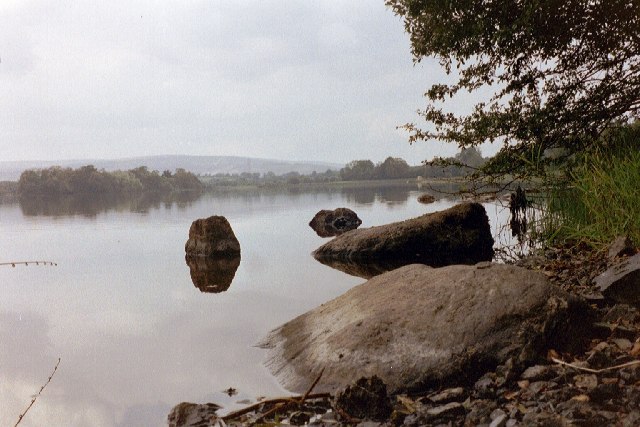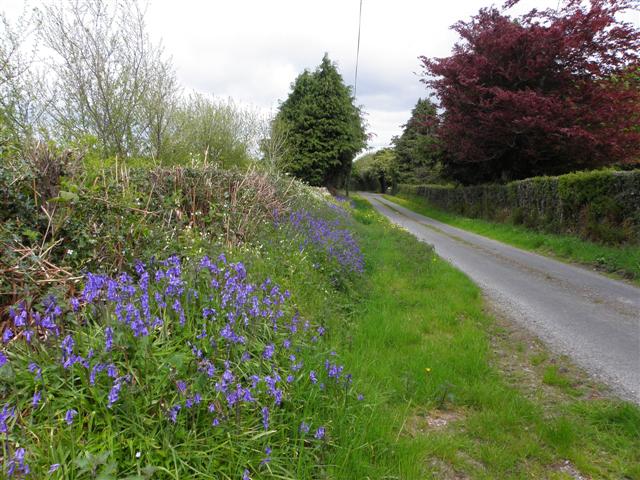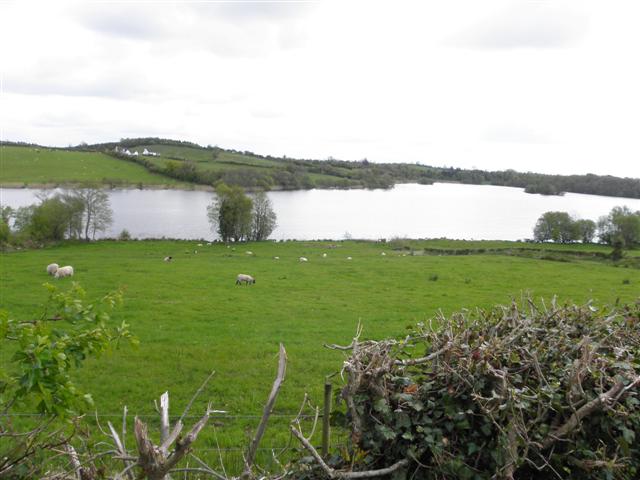|
Killywilly
Killywilly is a townland in the civil parish of Drumlane, Barony of Loughtee Lower, County Cavan, Ireland. Etymology The townland name is an anglicisation of a Gaelic placename, either ''Coill Mhuilinn'', meaning 'The Wood of the Mill', or ''Coillidh Bhuaile'', meaning 'The Wood of the Cattle-Fold', or ''Coill an Bhealaigh'', meaning ‘The Wood of the Pass’. The first name is more likely as there was a mill there at least as early as the 17th century and most of the early placename spellings are consistent with this. The earliest surviving mention of the townland is on the 1609 Ulster Plantation map of the Barony of Loughtee, where it is spelled ''Killivelly''. A 1610 grant spells it as ''Keilenolin''. The 1654 Commonwealth Survey spells it as ''Killevullin''. The 1660 Books of Survey and Distribution spell it as ''Killycullen''. The 1661 Inquisitions spell it as ''Kelewolin'' and ''Killewooley''. The 1790 Cavan Carvaghs list spells the name as ''Killevally''. Geography K ... [...More Info...] [...Related Items...] OR: [Wikipedia] [Google] [Baidu] |
Ardue
Ardue is a townland in the civil parish of Drumlane, Barony of Loughtee Lower, County Cavan, Ireland. Etymology The townland name is an anglicisation of a Gaelic placename, ''Ard Aodha'', meaning 'The Height of Hugh'. The local pronunciation is ' ''Are-Dew'' '. The earliest surviving mention of the townland is on the 1609 Ulster Plantation map of the Barony of Loughtee, where it is spelled ''Ardea''. A 1610 grant spells it as ''Ardea''. A 1611 grant spells it as ''Ardea''. The 1654 Commonwealth Survey spells it as ''Ardy''. The 1660 Books of Survey and Distribution spell it as ''Ardy''. The 1661 Inquisitions spell it as ''Ardea'' and ''Ardeagh''. The 1790 Cavan Carvaghs list spells the name as ''Ardue''. A sub-division of the townland was named Culnagolly (Gaelic, possibly ''Cúil na Gualaigh'', meaning 'The Corner of the Charcoal', or ''Coill na Gualaigh'', meaning 'The Wood of the Charcoal'). On the 1609 Baronial map it formed a separate townland from Ardue. An Inquisition da ... [...More Info...] [...Related Items...] OR: [Wikipedia] [Google] [Baidu] |
Rag River
The Rag River is a river in County Cavan, Ireland. It rises in Mullaghdoo Lough, in the townland of Aghnacreevy, parish of Kildallan, and flows in a north-easterly direction through the lakes of Clonty Lough, Togher Lough, Lough Rud, Aghavoher Lough, Killywilly Lough, Cuillaghan Lough, Tomkinroad Lough, Lough Tee Lower and Corraback Lough. It discharges into the Shannon–Erne Waterway in the townland of Corraback. It has a fish population of pike, bream, rudd, roach, gudgeon and perch. Archaeological finds in the river include dugout canoes, socketed bronze axes and Irish elk The Irish elk (''Megaloceros giganteus''), also called the giant deer or Irish deer, is an extinct species of deer in the genus '' Megaloceros'' and is one of the largest deer that ever lived. Its range extended across Eurasia during the Pleist ... antlers. The structures of interest along the river include Ardlougher Bridge, Greenville Corn Mill, Togher Bridge, Cranaghan Bridge, Killywilly Cavan & Lei ... [...More Info...] [...Related Items...] OR: [Wikipedia] [Google] [Baidu] |
Corranierna
Corranierna is a townland in the Parish of Tomregan, Barony of Tullyhaw, County Cavan, Ireland. (Disambiguation see also- Corranierna (Corlough) townland, County Cavan, Republic of Ireland.) Etymology The townland name is an anglicisation of either (1) ''Cor an Iarna'', meaning 'The Hill of the Skein (of thread)’, which derived its name from the weavers who lived there. In the 1938 Dúchas Folklore Collection there is an account of a flax mill in Corranierna, or (2) The local pronunciation however is 'Corr-Nern-Yah', which seems to indicate a different meaning: ''Cor na nAirchinneach'', meaning 'The Hill of the Erenagh'. On the 1609 Ulster Plantation Baronial map it forms part of Mullaghduff townland. On the Down Survey map of 1655 it was still part of Mullaghduff. A 1666 grant includes it as ''Mullaghduffe alias Cloghane alias Cormerin''. A deed dated 2 May 1724 includes the townland as ''Mullaghduffe alias Cloghane alias Cormerin''. Corranierna remained as part of Mullagh ... [...More Info...] [...Related Items...] OR: [Wikipedia] [Google] [Baidu] |
Cranaghan
Cranaghan is a townland in the Parish of Tomregan, Barony of Loughtee Lower, County Cavan, Ireland. Etymology The townland name is an anglicisation of the Gaelic placename ''Crannachan'' which means ‘Woodland’. The earliest surviving mention of the townland is on the 1609 Ulster Plantation map of the Barony of Loughtee, where it is spelled ''Granchinah''. A 1610 grant spells it as ''Granchinagh''. A 1627 grant spells it as ''Granchynagh, or Craynkyney, and Cronaghan''. The 1790 Cavan Carvaghs list spells the name as ''Cranaghan''. Ambrose Leet's 1814 Directory spells the name as ''Cranaghan''. Geography It is bounded on the north by Killywilly townland, on the east by Ardue, Ture, Drumlane and Greaghrahan townlands, on the south by Aghavoher and Carrigan townlands and on the west by Cavanagh (townland) and Mullaghduff townlands. Its chief geographical features are Killywilly Lough, Agavoher Lough, Lough Rud, the Rag River and several small drumlin hills reaching to an alt ... [...More Info...] [...Related Items...] OR: [Wikipedia] [Google] [Baidu] |
Mullaghduff, County Cavan
Mullaghduff (Irish: ''Mullach Dubh'') is a townland in the Parish of Tomregan, Barony of Tullyhaw, County Cavan, Ireland. Etymology The townland name is an anglicisation of the Gaelic placename 'Mullach Dubh' which means "The Black Hilltop", which probably derives from the blackish soil which covers the hill. The 1609 Ulster Plantation Baronial map spells the name as ''Mulladuff''. A 1610 grant spells the name as ''Mullaghduffe''. A 1630 Inquisition spells it as ''Mullaghduffe''. The 1641 Rebellion Depositions as ''Mullaighduffe'', the 1652 Commonwealth Survey as ''Mullaghduffe'' and the 1659 Down Survey map spells it as ''Mullaghduffe''. A 1666 grant spells it as Mullaghduffe. William Petty's 1685 map spells it as ''Mulladuf''. Geography It is bounded on the north by Annagh and Corranierna townlands, on the west by Cullyleenan and Agharaskilly townlands, on the south by Cavanagh (townland) and on the east by Cranaghan and Killywilly townlands. Its chief geographical featur ... [...More Info...] [...Related Items...] OR: [Wikipedia] [Google] [Baidu] |
Annagh, County Cavan
Annagh is a townland in the Parish of Tomregan, Barony of Tullyhaw, County Cavan, Ireland. Etymology On the 1609 Ulster Plantation Baronial map it is split into two townlands named ''Shannaontra'' and ''Shannaititr''. In a 1610 grant they are spelled ''Tanaghyeightra'' and ''Tanaghwotra''. In an Inquisition dated 20 September 1630 the two townlands were spelled ''Townaeiateragh'' and ''Tawnaowteragh''. In the 1652 Commonwealth Survey the spelling was ''Tenaghoghtragh'' and ''Tenaghightragh''. On the Down Survey map of 1655 these townlands were merged into one and it is named ''Annagh''. A 1666 grant spells the names as ''Anagh alias Tannaghyeitragh alias Tannaghowoteragh''. William Petty's 1685 map spells it as ''An''. The usual meaning suggested for the place name is that Annagh is an anglicisation of the Irish language placename "Eanach" which means 'A moor or marsh'. However it is more likely that Annagh is an abbreviation of 'Tannagh' (meaning a pasture) as the older names o ... [...More Info...] [...Related Items...] OR: [Wikipedia] [Google] [Baidu] |
Cuillaghan
Cuillaghan is a townland in the civil parish of Drumlane, Barony of Loughtee Lower, County Cavan, Ireland. Etymology The townland name is an anglicisation of a Gaelic placename, ''Coilleachán'', meaning 'The Underwood' (i.e. a place full of shrubs). The local pronunciation is 'Kull-Ya-Han'. The earliest surviving mention of the townland is on the 1609 Ulster Plantation Baronial map of the Barony of Loughtee, where it is spelled ''Cullagan''. A 1610 grant spells it as ''Cullagan''. The 1654 Commonwealth Survey spells it as ''Quillaghan''. The 1660 Books of Survey and Distribution spell it as ''Quillehan''. The 1661 Inquisitions spell it as ''Callaghan alias Callagan'' and ''Quillaghan''. Geography Cuillaghan is bounded on the north by Corraquill and Dernagore townlands (both situated in the Northern Ireland part of the United Kingdom), on the east by Camalier and Tomassan townlands, on the south by Ardue townland and on the west by Annagh, County Cavan, Cloncoohy, which is ... [...More Info...] [...Related Items...] OR: [Wikipedia] [Google] [Baidu] |
Census Of Ireland, 1901
A census is the procedure of systematically acquiring, recording and calculating information about the members of a given population. This term is used mostly in connection with national population and housing censuses; other common censuses include censuses of agriculture, traditional culture, business, supplies, and traffic censuses. The United Nations (UN) defines the essential features of population and housing censuses as "individual enumeration, universality within a defined territory, simultaneity and defined periodicity", and recommends that population censuses be taken at least every ten years. UN recommendations also cover census topics to be collected, official definitions, classifications and other useful information to co-ordinate international practices. The UN's Food and Agriculture Organization (FAO), in turn, defines the census of agriculture as "a statistical operation for collecting, processing and disseminating data on the structure of agriculture, covering th ... [...More Info...] [...Related Items...] OR: [Wikipedia] [Google] [Baidu] |
William Bedell
The Rt. Rev. William Bedell, D.D. ( ga, Uilliam Beidil; 15717 February 1642), was an Anglican churchman who served as Lord Bishop of Kilmore, as well as Provost of Trinity College Dublin. Early life He was born at Black Notley in Essex, and educated at Emmanuel College, Cambridge, where he was a pupil of William Perkins. He became a fellow of Emmanuel in 1593, and took orders. In 1607 he was appointed chaplain to Sir Henry Wotton, then English ambassador at Venice, where he remained for four years, acquiring a great reputation as a scholar and theologian. He translated the ''Book of Common Prayer'' into Italian, and was on terms of close friendship with the reformer, Paolo Sarpi. He wrote a series of sermons with Fulgenzio Micanzio, Sarpi's disciple. In 1616 he was appointed to the rectory of Horningsheath (near Bury St Edmunds, where he had previously worked), which he held for twelve years. Ireland In 1627, he became Provost of Trinity College Dublin, despite having ... [...More Info...] [...Related Items...] OR: [Wikipedia] [Google] [Baidu] |
Carn, Tullyhunco
Carn (Irish derived place name, Carn meaning 'A cairn of stones or a burial-mound'.) is a townland in the civil parish of Kildallan, barony of Tullyhunco, County Cavan, Ireland. Geography Carn is bounded on the north by Ballyhugh and Greaghrahan townlands, on the west by Aghavoher, Breandrum, Tullyhunco and Killygreagh townlands, on the south by Kildallan townland and on the east by Kilnacross and Listiernan townlands. Its chief geographical features are Carn Lough, small streams and a wood. Carn is traversed by minor public roads and rural lanes. The townland covers 228 acres. History The townland was occupied from prehistoric times as is evident from the megalithic structure therein. From medieval times up to the early 1600s, the land belonged to the McKiernan Clan. Their lands were divided into units called a ballybetagh. A survey conducted in 1608 stated that one of these was named ''Ballencharne'' containing 14 polls or townlands, which was centered on Carn townland. ... [...More Info...] [...Related Items...] OR: [Wikipedia] [Google] [Baidu] |
John Richardson (bishop Of Ardagh)
John Richardson (1580–1654) was an English bishop of the Church of Ireland. He was nominated Bishop of Ardagh on 8 April 1633 and consecrated in September that year. He was also Archdeacon of Derry from 1622 to 1634; and Archdeacon of Connor from 1639 to 1654. He left Ireland before the Rebellion of 1641 and died in London on 11 August 1654. Life He was born near Chester, entered Trinity College, Dublin, graduated M.A., and became a fellow in 1600. In the same year he was selected with James Ussher and another as lay preacher at Christ Church Cathedral, Dublin. Richardson's part was to preach on Wednesdays, and explain the prophecies of Isaiah. He later took holy orders, and was created D.D. in 1614. Richardson held many preferments. He was appointed vicar of Granard, in Ardagh, in 1610; rector of Ardsrath, Derry, in 1617; Archdeacon of Derry in 1622 (reappointed in the new charter of 1629); Prebendary of Mullaghbrack at St Patrick's Cathedral, Armagh on 14 May 1633; ... [...More Info...] [...Related Items...] OR: [Wikipedia] [Google] [Baidu] |


.jpg)







.jpg)
